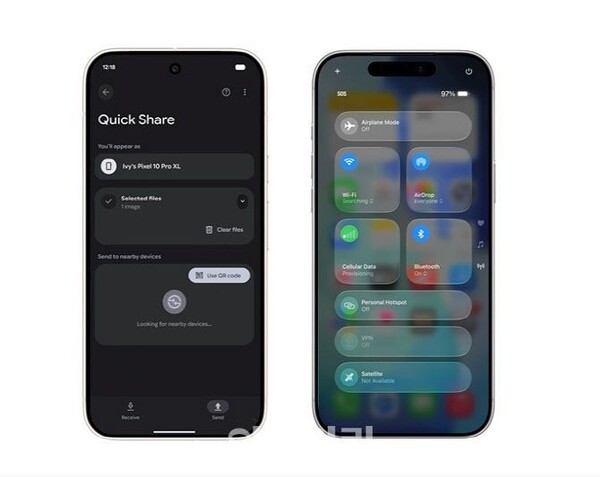For more than a decade, the walls of Apple’s walled garden have stood firm. Today, a major crack appeared.
Google has unveiled its new Pixel 10 series and confirmed that the device will support a file sharing feature that directly communicates with Apple’s AirDrop. The feature uses a technology developed by Google without Apple’s cooperation. For the first time, users can send photos and videos between Android and iOS at high speed using only built-in system tools.
Google says the new Quick Share system on the Pixel 10 can recognize and connect to AirDrop signals, which eliminates the long-standing barrier between the two mobile ecosystems.

A decade of AirDrop exclusivity
AirDrop has long been one of the most beloved features in Apple’s ecosystem. It combines Bluetooth and Wi-Fi Direct to transfer files at high speed between iPhones, iPads, and Macs.
Android has offered its own version, Quick Share, yet direct transfer between Android and iOS has never been officially supported. For years, this gap has been a symbol of user frustration.
The European Union repeatedly urged Apple to open AirDrop to other devices. Apple resisted and cited its commitment to privacy and security.
Google says it simply “made it work”
According to Bloomberg and other global outlets, Google revealed that it built a method for Pixel 10 to detect and connect with AirDrop signals. For now, the feature is Pixel 10 only. Google plans to expand it to more Android devices.
Google emphasized that the system is not a workaround or a server hack. It is a peer-to-peer connection. No data is uploaded to the cloud and no personal information is collected. In short, the mechanism mirrors the speed and stability of AirDrop while removing the ecosystem barrier.
User convenience or ecosystem philosophy. How will Apple respond?
Industry analysts are comparing the moment to the recent expansion of RCS, the next-generation messaging standard. Google’s spokesperson said that device type should not matter when sharing with family and friends. Sharing, they said, should simply work. The comment was widely viewed as a public challenge to Apple’s closed ecosystem strategy.
Apple has not commented. Given that Google’s move arrived without prior coordination, it remains unclear whether Apple will allow this cross-platform feature to continue. Some analysts expect Apple to accept limited interoperability in the name of user convenience. Others warn that Apple may attempt technical countermeasures to preserve its ecosystem wall.
Will cross-platform sharing finally become normal?
The Pixel 10 update is being hailed as the first real step toward lowering the divide between the world’s two dominant mobile ecosystems. With RCS messaging already gaining traction, many experts believe that seamless file sharing could push the mobile industry toward a new baseline of interoperability.
The impact may be especially significant in South Korea, where Samsung Galaxy and iPhone users frequently mix within families, workplaces, and social groups. Until now, sharing photos or videos across devices often required messaging apps that compressed and degraded quality.
If Android and iPhone users can finally exchange high-quality files with a single built-in command, this long-standing daily inconvenience could disappear. For Korean users, it signals the start of a new era where device choice no longer dictates communication quality.
Written by Tech Insider Columnistㅣtlswnqor@naver.com
- Transparent iPhone Rumors Surge Again as Apple’s “All-Glass” Patent Raises Bezel-Free iPhone Expectations
- [Column] What Apple’s Post–Tim Cook Era Is Really Worried About…Three Strategic Shifts Signaled by John Ternus’ Rise
- Samsung Opens the 2026 Foldable Battle… “Ultra-Slim, Ultra-Light Flip Will Rewrite the Market”
- The ‘243g Beast’? iPhone 18 Pro Max Poised to Become the Heaviest iPhone Ever

![[동학] 카카오톡 친구탭, 결국 12월 롤백… “격자형 피드는 선택 옵션으로”](https://cdn.kmjournal.net/news/thumbnail/custom/20251126/5517_10550_1119_1763853080_120.jpg)


![[테크 칼럼] 제미나이3, GPT-5.1을 넘다…AI는 이제 ‘일을 대신하는 시대’로 간다](https://cdn.kmjournal.net/news/thumbnail/custom/20251126/5457_10454_4847_1763621329_120.jpg)



![[낭만 테크 시대] AI 대항해 시대](https://cdn.kmjournal.net/news/thumbnail/custom/20251126/5603_10714_4334_1764121414_160.jpg)

